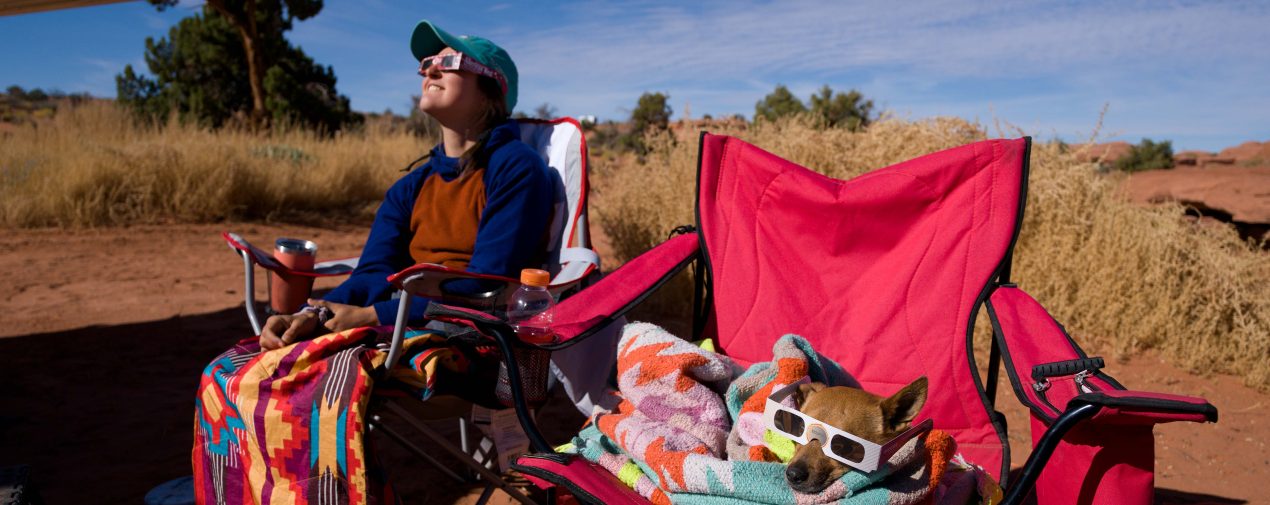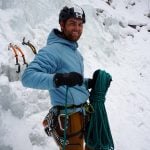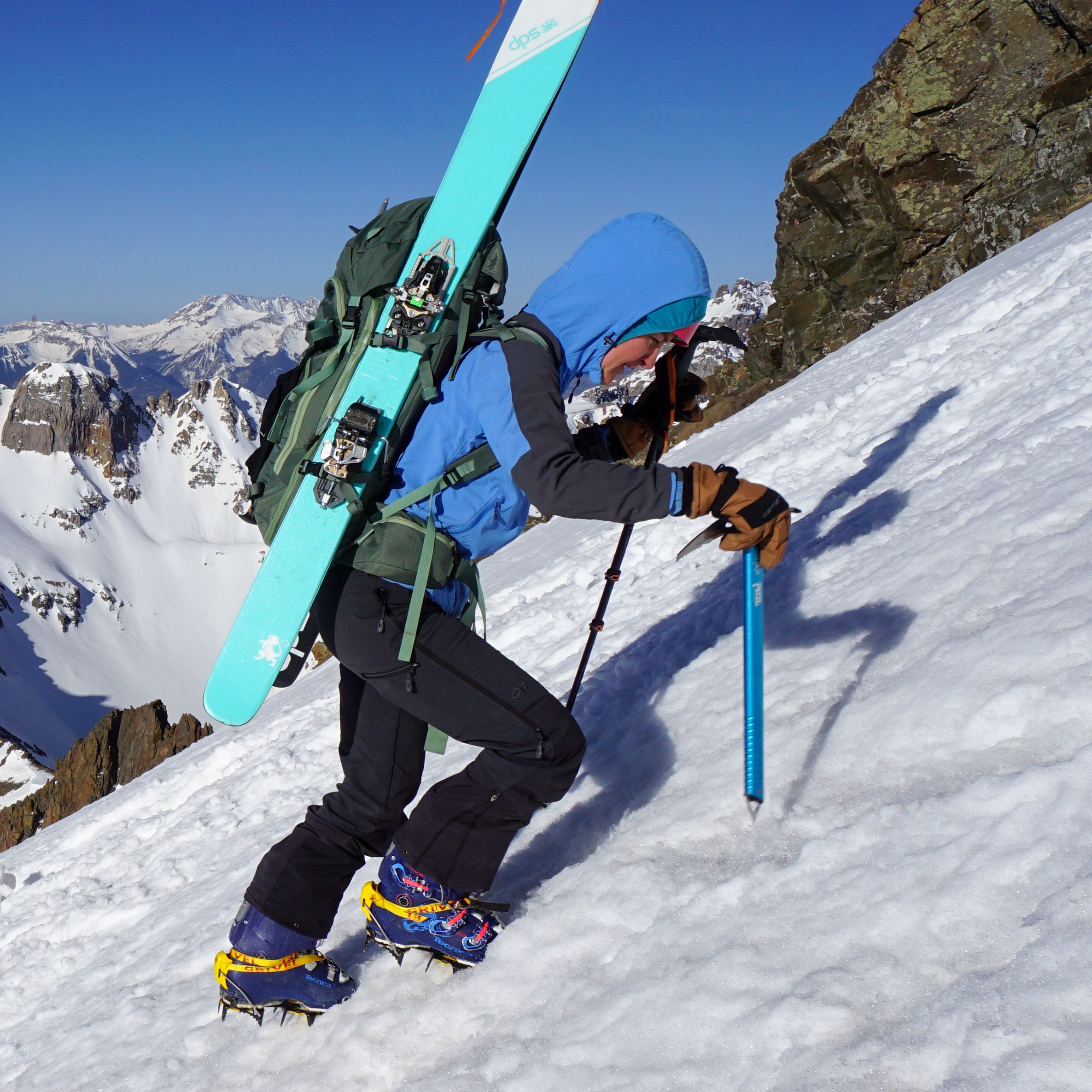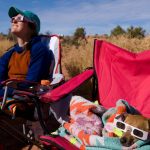A Beginners Guide to Car Camping
Picture this: you and some close friends are sitting around a campfire. The night air is cool and above you is a sea of stars. It’s quiet except for the crackle of the fire, the wind in the trees, and an owl hooting above. As the fire winds down and everyone is beginning to succumb to their tiredness, you walk over to your tent, crawl into your cozy sleeping bag, and drift off to a deep and peaceful sleep. If this sounds like an ideal way to spend a summer night, then this is the guide for you.
What is Car Camping?
Car camping is camping with the aid of a vehicle, allowing you to bring more amenities. It is different from backpacking, where you have to carry everything you need on your back, limiting the items you have access to. Car camping is a great way for beginners to get outside and experience the outdoors. Having access to your vehicle nearby gives you flexibility as a beginner to bring amenities that will keep you safe and comfortable.
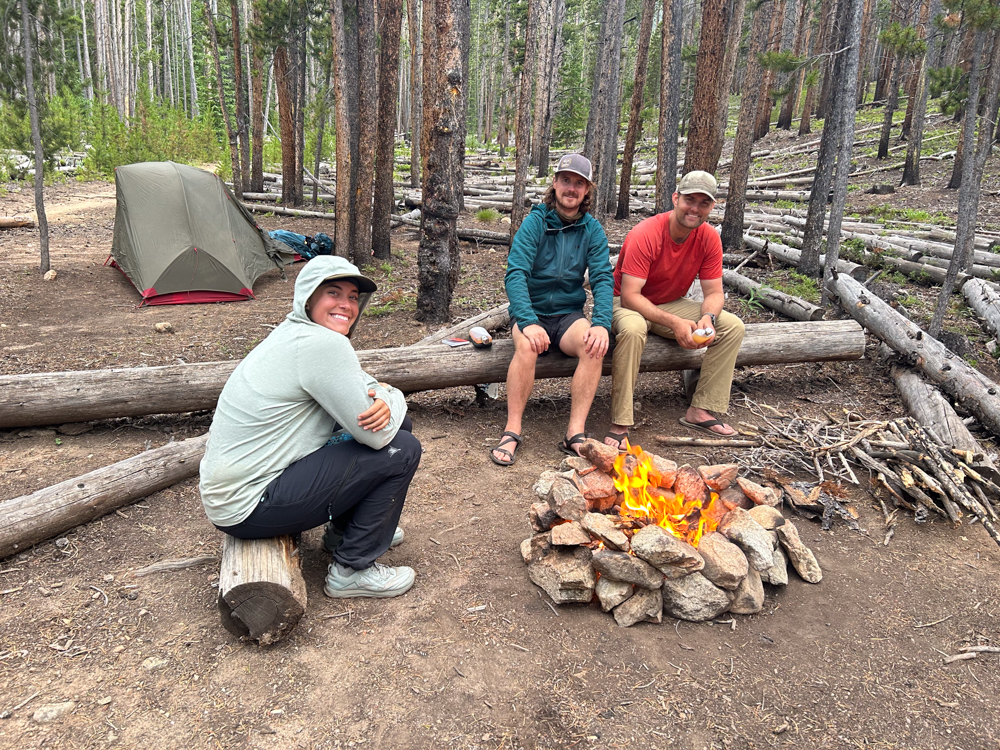
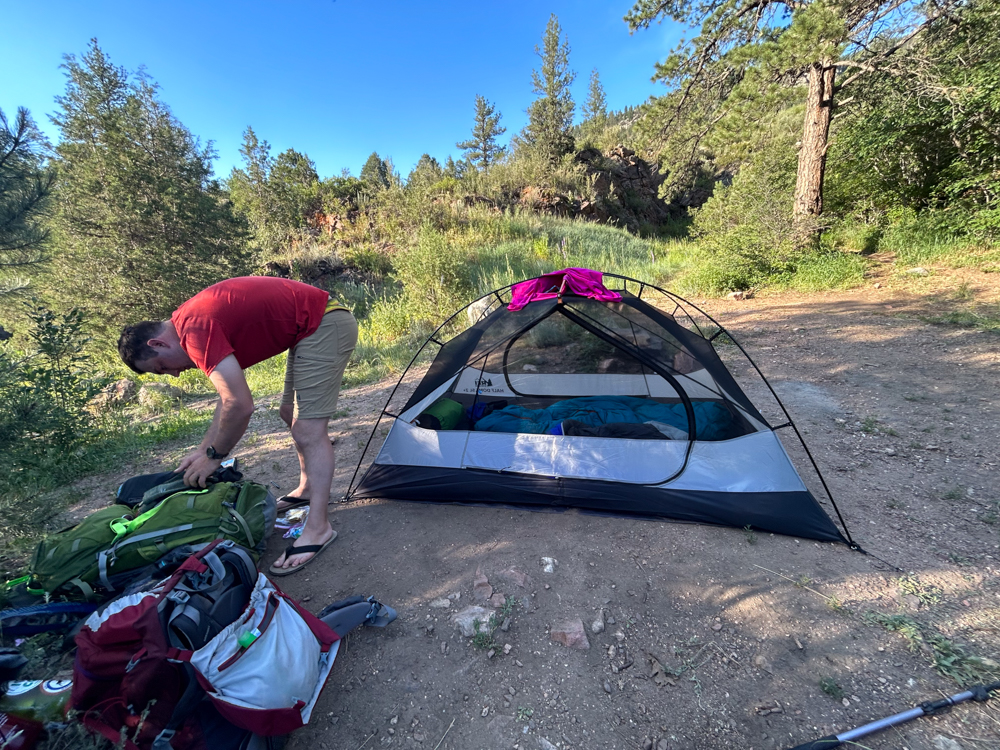
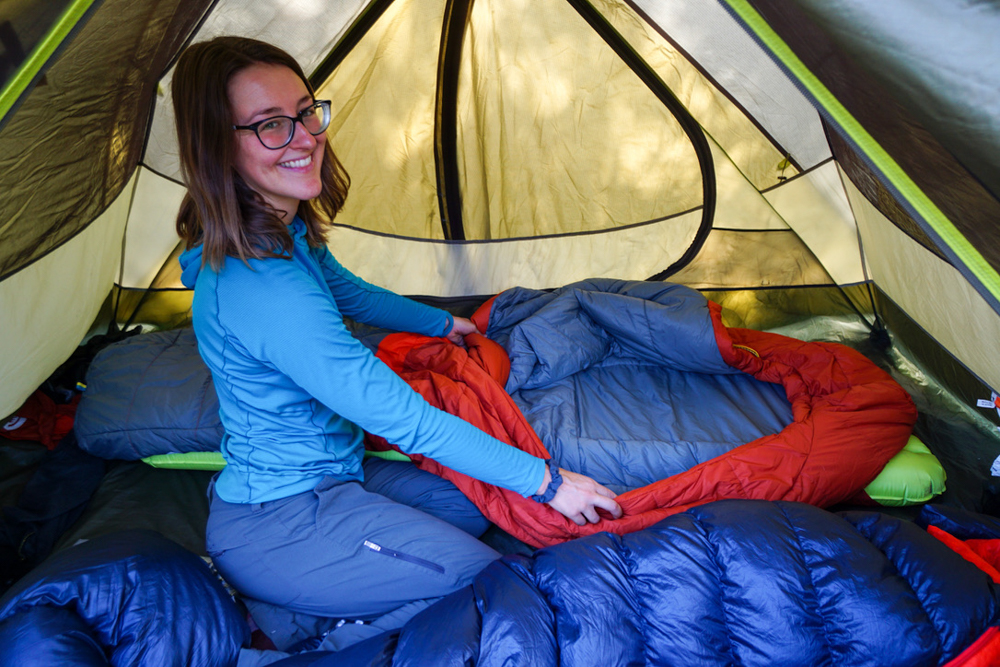
Essential Gear
Some people opt to build out a sleeping space in their vehicles, but this post will dive into tent camping instead.
Shelter
Arguably the most essential piece of gear for camping will be your shelter. This is your primary form of protection, responsible for keeping you protected and dry. When picking out a tent, you will need to consider the size and season rating. Tents are generally advertised as 3 or 4-season. A 3-season tent will be sufficient for most beginners planning to camp in spring, summer, and fall. 4-season tents are designed for camping in winter and are generally heavier, more complex, and costly. In terms of sizing, tents are sized based on the number of people that can comfortably fit. So be sure to get a tent that can fit the number of people in your party. For example, Zach and I use a 3-season 2-person tent from REI, in Colorado, in the summer, to fit us and our small dog comfortably. Since tent sizes aren’t standardized, REI or your local outdoor shop are great places to go to see first hand what size and style of tent will fit your needs.
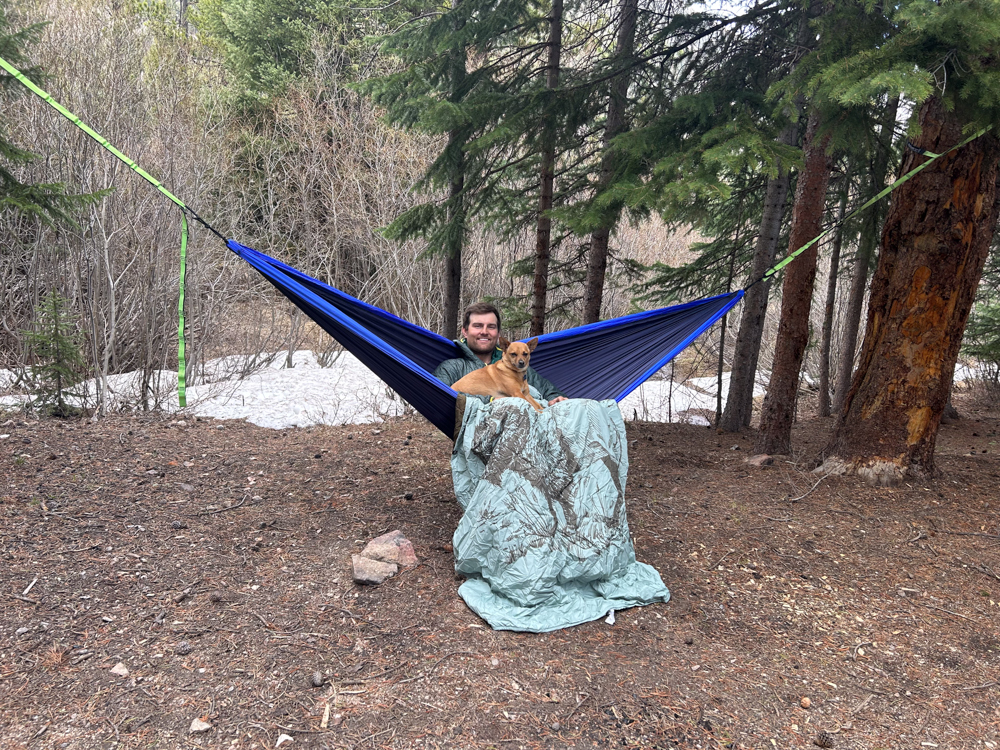
Although tents are the most common form of shelter, there are alternatives such as hammocks or even straight up “cowboy camping”. Hammocks are a cheaper and lightweight option, but they do leave you more exposed to the elements. One option is to purchase a rain fly to cover your hammock or many brands sell an all in one kit. I tend to find that due to their open nature I feel colder when sleeping in a hammock versus a tent. You can combat this with a sleeping pad underneath you in the hammock and a slightly warmer sleeping bag. For the purists out there that want to experience the outdoors unencumbered, there is always the option of cowboy camping. Cowboy camping is sleeping directly on the ground without shelter. It can be a rewarding experience in the right conditions. There is nothing better than waking up to the view of the Milky Way, overhead, at night, while cowboy camping. Be sure to check the weather though or have an alternate form of shelter nearby in case of an errant strom.
Sleeping Bag
The second most important piece of gear is your sleeping bag, which will keep you warm and cozy to get a good nights rest. Sleeping bags are generally sold by gender and temperature rating. Women specific sleeping bags are cut and filled differently because women typically sleep colder than men. If the sleeping bag is uni-sex then it is important to look at the COMFORT and LIMIT rating. The COMFORT rating is the lowest temperature that generally women and cold sleepers will be “comfortable”, whereas the LIMIT rating is the lowest temperature where men and cold sleepers will be comfortable. You will also see an EXTREME rating, this is the lowest temperature that you will survive the night at, but will not sleep or be comfortable in. It is imperative to not mix that up with the COMFORT or LIMIT ratings. The degree rating of the bag is based on the air temperature, so be sure to get a bag that is warmer than the night time temperatures you expect to be camping in. I use a 20 degree sleeping bag in the summer in Colorado, especially at higher elevation, and Zach uses a 15 degree bag. These bags give us a buffer to the night time temperatures, because you don’t want to be right on the edge of your temperature rating. Since these ratings are generalized by the manufacturers, you may find that you sleep warmer or colder than the suggested ratings. This means the process of finding “your” perfect bag may take some trial and error. Don’t worry if you don’t have some fancy sleeping bag yet, a great way to get out camping before investing in the gear is to bring a bunch of blankets and pillows from home in which you can use to make a warm cozy bed for yourself.
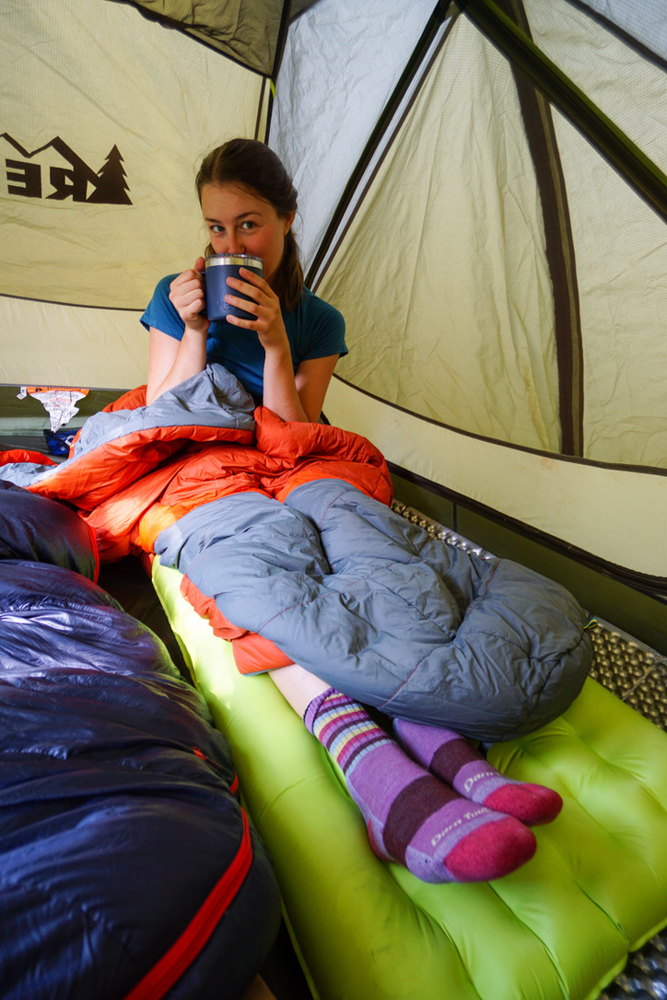
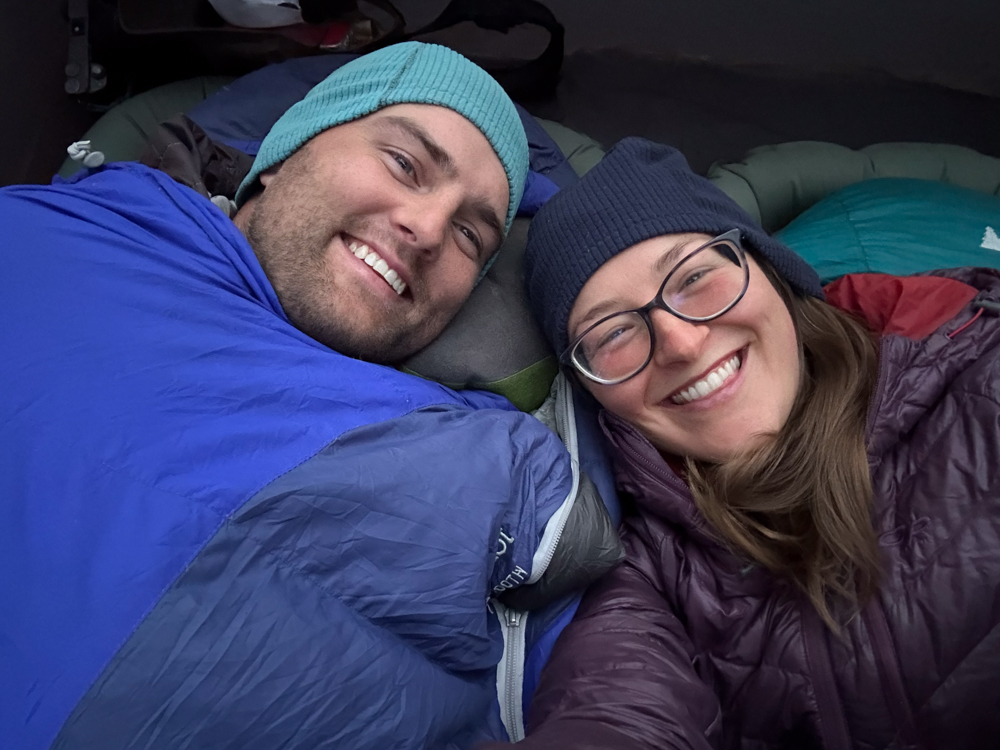
Sleeping Pad
There are three main types of sleeping pads: air, foam, or hybrid. Sleeping pads are given a R-value as a temperature rating. The larger the R-value the more insulation and warmth the sleeping pad provides. Car camping allows you to bring a heavier and more robust sleeping pad. Most any sleeping pad will work for car camping, so pick out a pad that you find comfortable.
Camp Stove
Whether you are cooking from scratch, heating up leftovers, or boiling water for your morning coffee, you’ll need some sort of a camp stove! For car camping, Zach and I use a 2-burner Coleman stove. We like it because it is fairly cheap and efficient and the propane canisters needed are sold most everywhere. There are also smaller stove options such as Jetboil style stoves which are much more compact, but a little more difficult to cook a meal with. As always there is also the classic, cooking over the open campfire. There are so many ways to do this from placing a cast iron grate or skillet onto the fire, wrapping food in tin foil and putting it in the fire, or even roasting foods on a stick over the fire. The point is, if you choose to cook with the campfire you will just have to figure out which of the endless options works best for you.
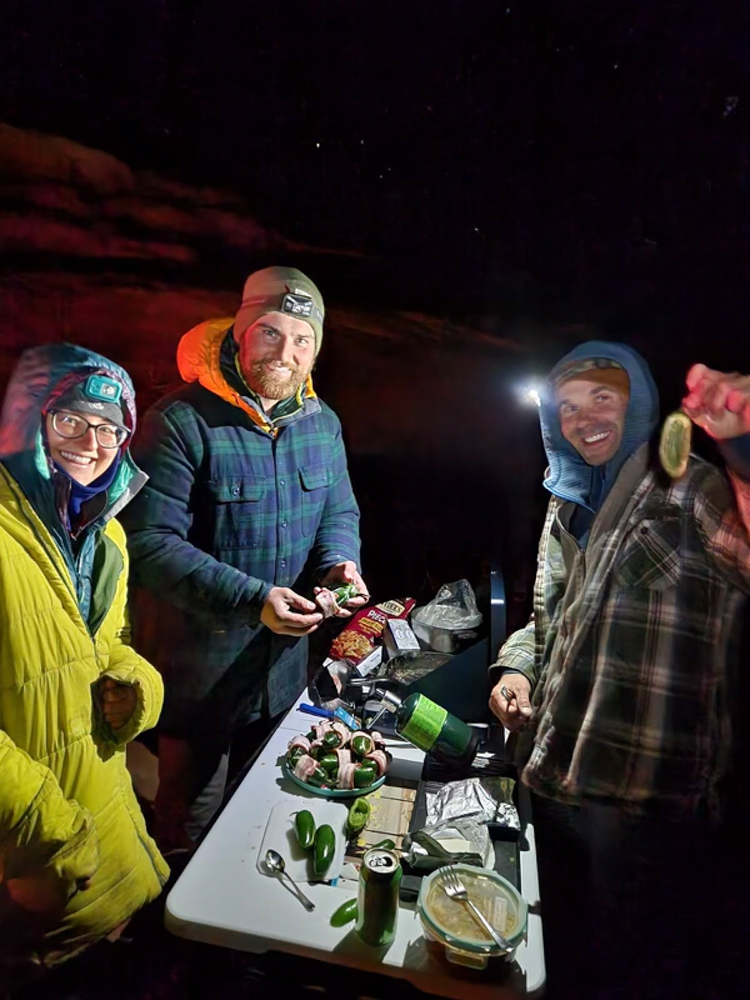
Water
When car camping it is easy to bring enough water for your stay, so we recommend bringing water jugs and/or prefilled nalgenes. Water jugs come in a variety of sizes and styles. We use the Reliance 7 gallon water jug because it comes with an easy to use spout and is more than enough water for a weekend out. We like to bring a minimum of one gallon per day per person.
Headlamp
An often overlooked piece of a gear, a headlamp is a small but mighty tool. Headlamps are sold in lumen ratings, the higher the number the brighter the light. We have been enjoying the Petzl Tikka Core because it has a rechargeable battery, three brightness settings, and a red light option. The red light option on headlamps allows you to not blind your camping mates.
Camp Chair
Not an absolute essential, but you’ll be glad you have it! Any camp chair will do! We have simple fold up chairs that are comfy but cheap. Pro tip: camp chairs are a great way to indicate to other campers that the site is occupied if you leave camp for the day.
Clothing
From our experience, it is generally colder than you expect. The solution is layers! For most a mid-weight jacket such as a Patagonia nano-puff will suffice. We also like to bring various sweaters, flannels, and even fleece lined pants or baggy sweats to layer on top. We always bring a beanie and gloves as well (yes, even in summer).
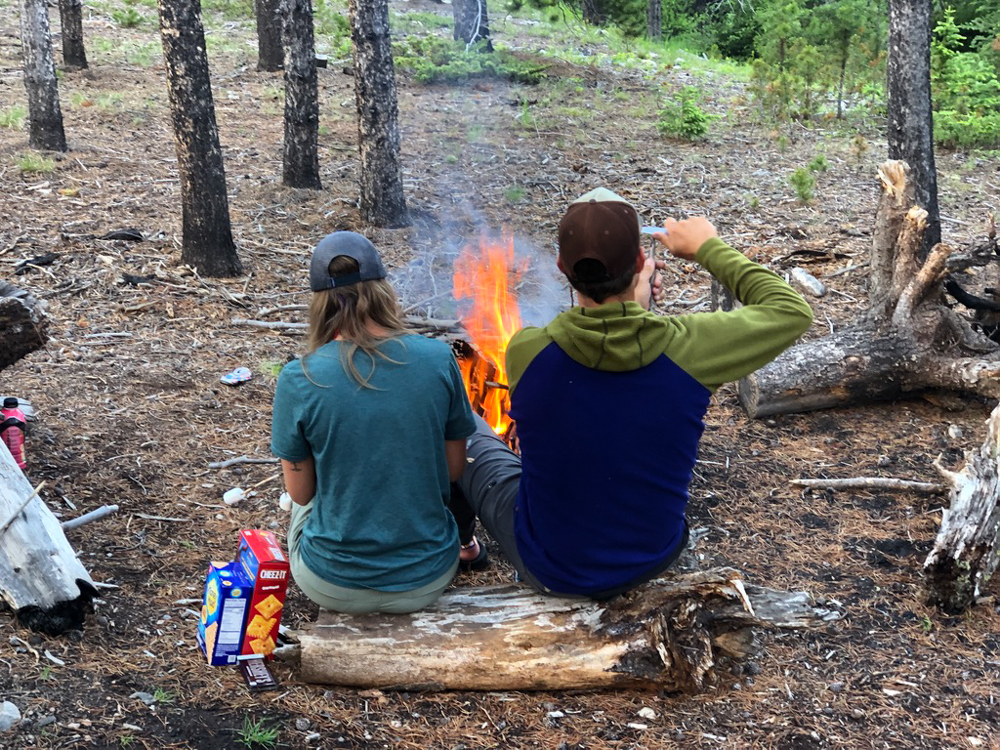

Optional Items
Other gear that you can bring as a luxury of car camping: a cooler, battery bank, speaker (but be courteous to nearby campers), hammock, deck of cards or other games, and don’t forget a pillow!
Now that you have your essential gear, where do you want to go?
The two main types of campsites are established campgrounds and dispersed campsites. Established campgrounds come in many different varieties and are managed by varying entities. They can be paid or unpaid, but generally have some sort of a fire ring and bathroom, and in some cases potable water and/or electricity. Established campgrounds are more likely to require reservations ahead of time and generally have a fee. The benefit, however, is you have a designated site to go to and usually access to a bathroom. On the other hand, dispersed camping is more primitive, unpaid, and does not require reservations. This can lend itself to a more secluded atmosphere. The difficulty with dispersed camping is knowing where to go, the uncertainty of securing a site, and the lack of amenities. When camping in a dispersed campsite, you’ll have to bring additional items such as your own toilet system. This could be some version of a ‘pooping bucket’ (essential for desert camping) or a trowel to dig a cat hole in the forest, since no bathroom is available.
How to find your ideal campsite
Your best tool for finding a campsite is the internet! For established campgrounds, entities such as the US Forest Service (USFS), Bureau of Land Management (BLM), and State and National Parks provide information on their websites about campground availability and reservations. For improved results, pick a town or area that you desire to camp near to narrow down your search. For example, we might search for ‘USFS campgrounds near Buena Vista, CO.’
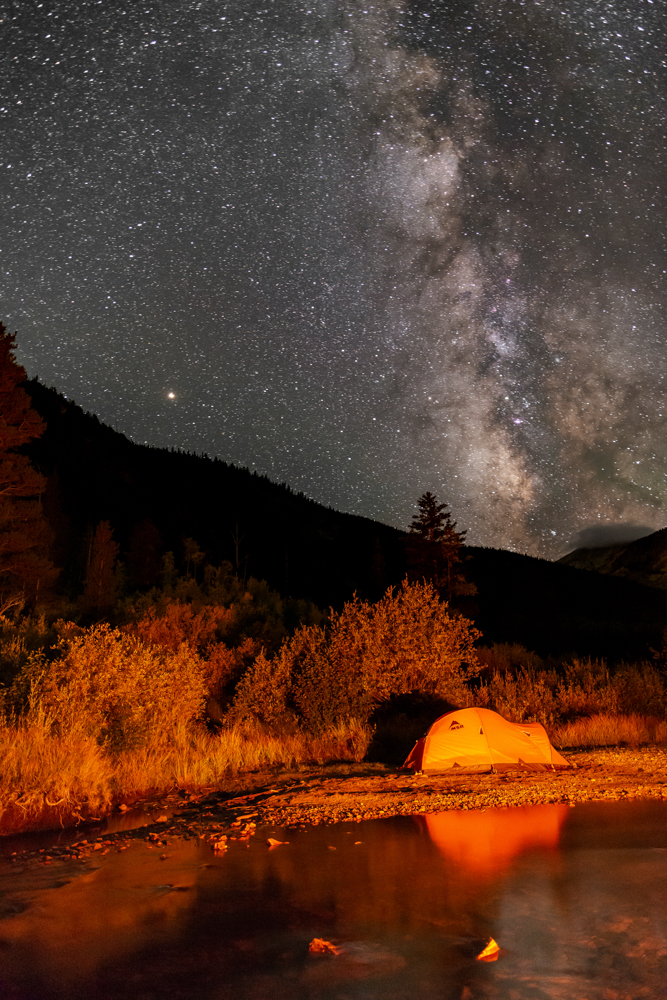
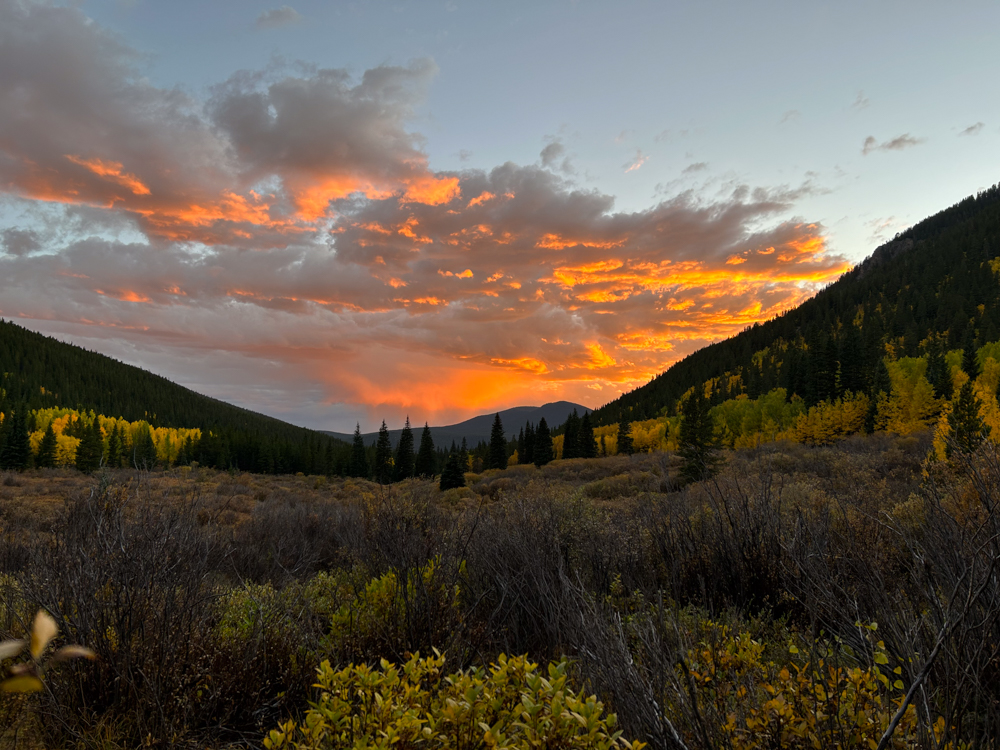
When it comes to dispersed camping, we recommend tools such as freecampsites.net, iOverlander app, maps of National Forest and BLM land, and internet searches with the key word of ‘dispersed’ such as ‘dispersed camping near Moab, UT.’ It’s important to do your research and make sure you’re on public lands and not trespassing on private property. It is also important to look up the principles of Leave no Trace). This helps ensure long term accessibility for future campers.
So get out there and enjoy the great outdoors! Learn from your experiences and laugh at your mistakes.

